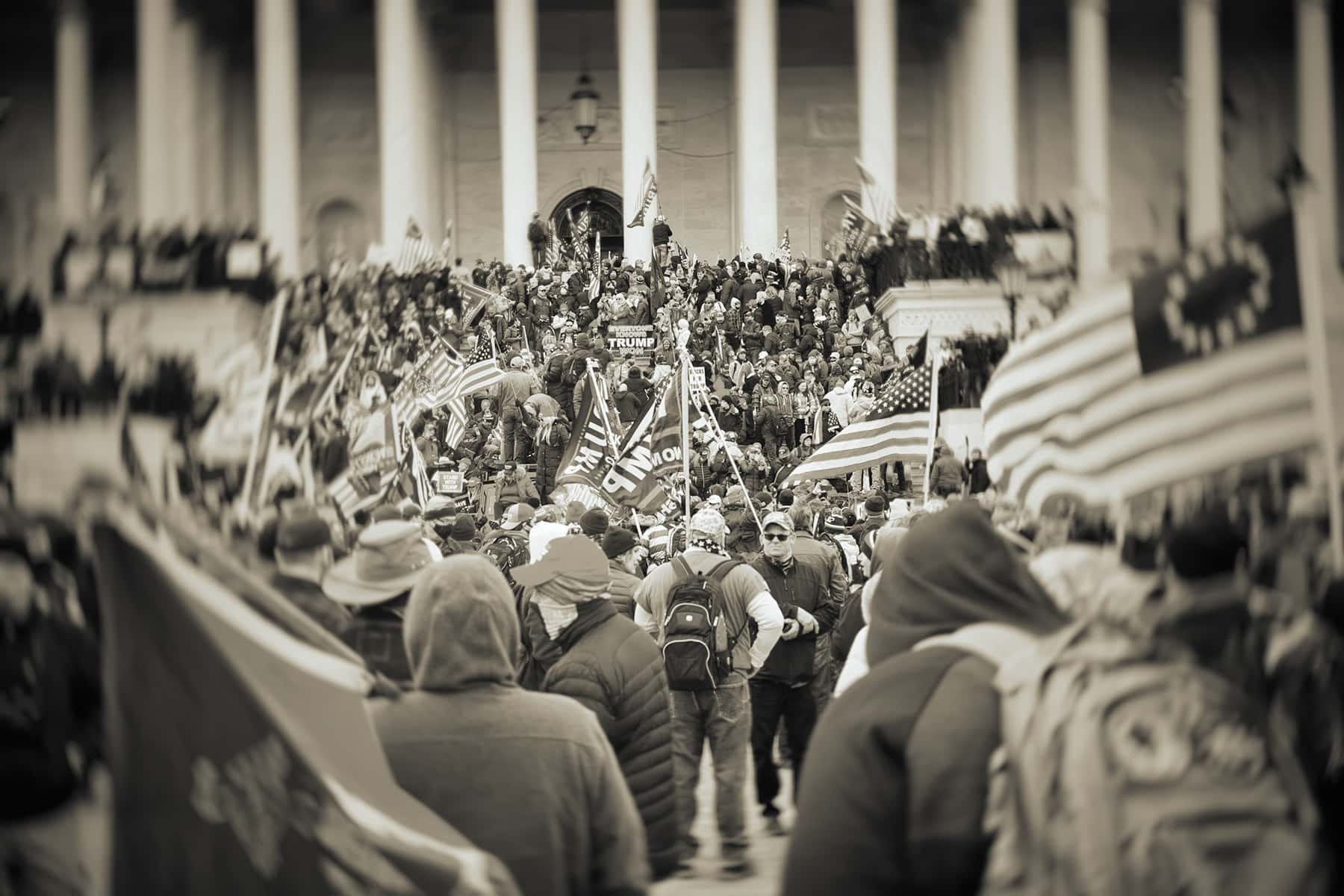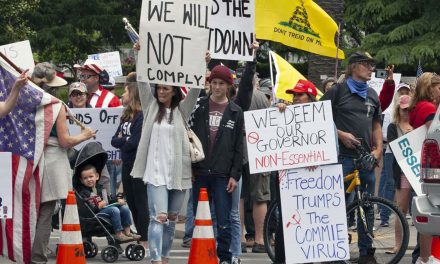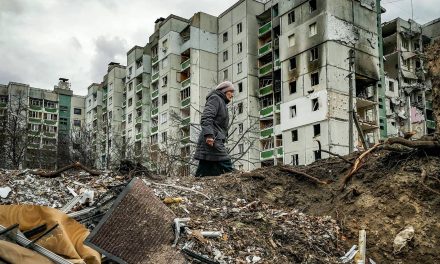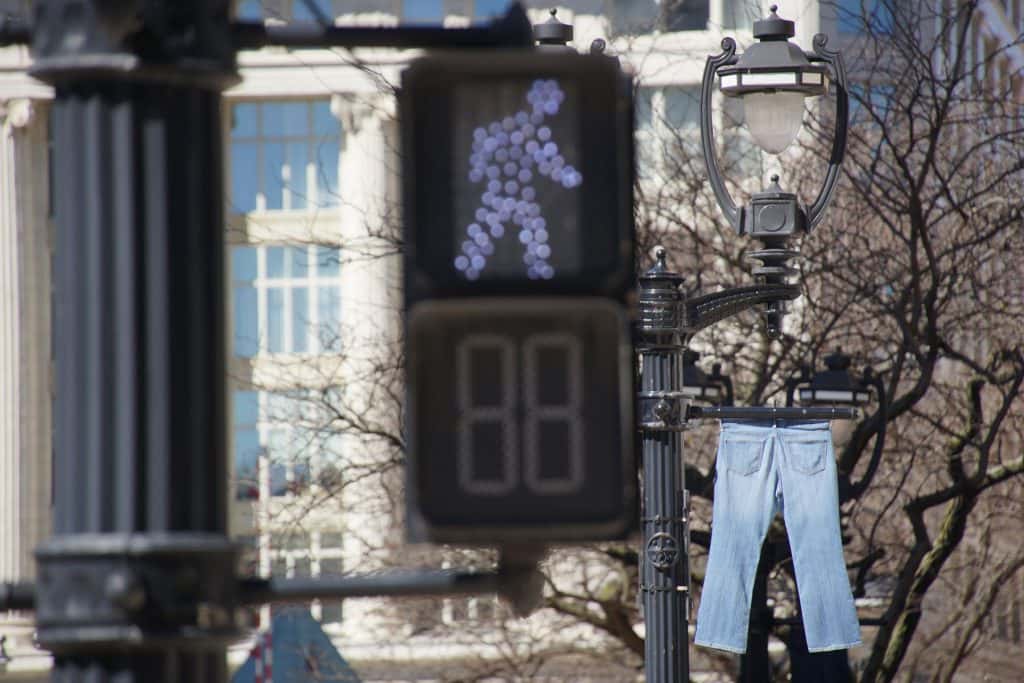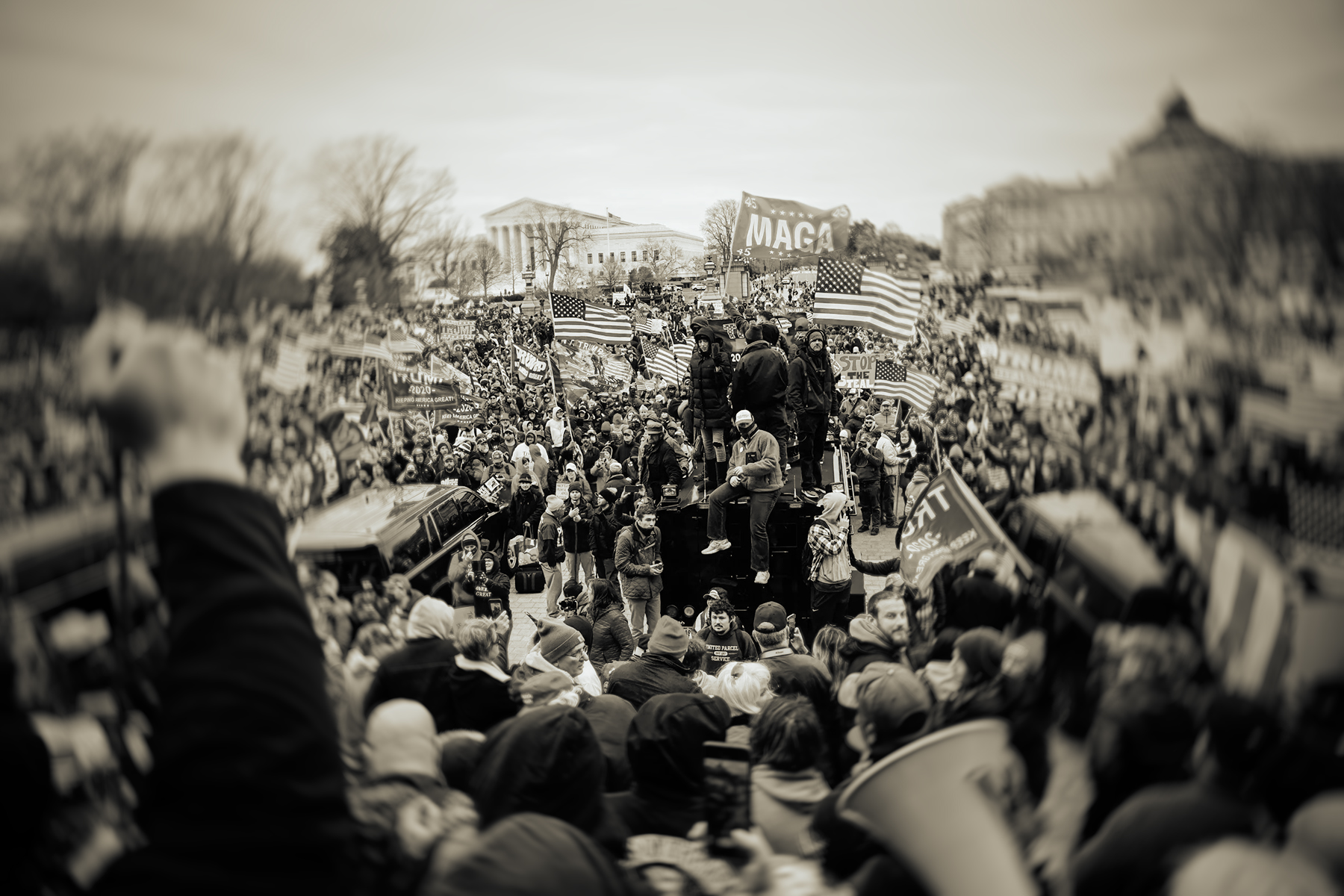
A newly released surveillance video of the Capitol tunnel in Washington DC on January 6, 2021, shows a sea of angry rioters pushing against dozens of helmeted police officers jammed inside the tunnel.
The footage, which several media outlets, including CNN, sued to obtain from the federal government, shows a microcosm of the violent effort to overturn the 2020 presidential election. In the video, several men who appear to be White — and entirely unafraid of the well-armed militarized police line — can be seen climbing on top of one another, grabbing batons from the officers’ hands, and beating the clear shields the officers were using to protect themselves.
We Feel Fear
For me — and for many of us, I suspect — the video is as viscerally triggering as much of the footage that emerged a year ago. It is also a clear illustration of the impunity White America feels when facing cops, and it showcases White rage and state power — two forces I instinctively fear — facing off against one another. It is a fear I have inadvertently cultivated in 30 years of living in this country as a brown-skinned immigrant with a foreign-sounding name.
It was the same fear I felt in the days after the 2016 presidential election, when I walked into a grocery store and wondered who among the White Americans around me chose a fascist hate-monger as their leader. It is the same fear I feel every time a police car pulls up behind me while I’m driving.
It is the same fear that haunted me when I was a reporter traveling to DC to cover George W. Bush’s inauguration in 2004 and found myself a lone Brown face in a sea of wealthy, White, and politically powerful Americans clad in mink and expensive leather.
I can trace this fear all the way back to the moment I stepped foot in the U.S. at the Houston airport in 1991. As a teenage university student traveling with my father, I experienced a sense of pervasive hostility that sent a clear message: You don’t belong here.
But scanning the faces of the insurrectionists in this video and others, I see no fear. I see only anger, entitlement, and a thirst for violence and vengeance. I see faces distorted in rage at the symbols of law and order they often purport to uphold, now standing in the way of something they wanted. Police forces are expected to work in service of White America, protecting their persons and property from the “unruly” Black and Brown mobs — not to stand in the way of their desires.
The Gaslighting of America
The rage seen in the video was a stark reminder of what Zenobia Jeffries Warfield expressed a year ago in response to the insurrection: “The people of this country have reinforced the idea time and again that these United States of America are for White people.”
And that’s precisely what former President Donald Trump and his ilk have been trying to reinforce in the national psyche via the public rage that they are convinced is justified.
Today, Trump remains active, reinforcing his lies by saying to his supporters nearly a year after the riot, “Remember, the insurrection took place on November 3rd, it was the completely unarmed protest of the rigged election that took place on January 6th.”
Of course, the rioters were armed. And they were angry, which made for a deadly combination. And they had no fear, boasting about their participation on social media with details of how much “fun” they had.
They felt validated by their president, who said on Twitter:
These are the things and events that happen when a sacred landslide election victory is so unceremoniously & viciously stripped away from great patriots who have been badly & unfairly treated for so long.
His words were fairly typical of how he conducted himself as president — a gaslighting of the nation.
“Remember this day forever,” he added.
I don’t think we could ever forget.
No Justice Served
As we come upon the first anniversary of the January 6 insurrection, more than 700 rioters have been arrested and charged with violating various laws, according to the U.S. Department of Justice. While the claim that this is the “biggest investigation in FBI history” may give the appearance that justice is being served, the DOJ reports that so far “approximately 70 people” have been convicted or had their federal cases adjudicated. Of those, 31 people were sentenced to jail time, while 18 were sentenced to home detention. As of December 2021, the longest sentence was a mere five years, for a Florida man named Robert Palmer who assaulted Capitol police.
A year ago, YES! Senior Editor Chris Winters wrote that the insurrection demanded a strong response. He rightly predicted that Biden’s pick to lead the Department of Justice, Merrick Garland, was “hardly the crusader for justice this moment demands.”
A day before the anniversary, Garland announced that his Department of Justice would “hold all January 6th perpetrators, at any level, accountable under law,” implying there may be prosecutions of higher-level figures, though Garland did not name any individuals.
Meanwhile, a House select committee investigating the insurrection continues with few tangible outcomes. Although Trump’s former adviser Steve Bannon has been charged with contempt of Congress, and his former chief of staff Mark Meadows is in the crosshairs of the investigation, so far no top leaders have been held accountable, least of all Trump himself.
The Way Forward
It is tempting to give in to despair about collective White violence, impunity, and criminal activity yet again going unpunished. On the other hand, it may also feel tempting to sweep the violence of last year under the rug. But the University of Chicago’s Project on Security and Threats found that a whopping 21 million Americans share the values of the insurrectionists, and a majority among them believe the use of force is justified to return to Trump’s America. Today, many of those who feel a connection with the rioters are infiltrating school boards and local government positions.
But, as Stephen Zunes pointed out last year, tens of thousands of progressive Americans participated in nonviolent trainings and efforts to protect the election results in 2020. This expansion of a powerful movement to protect democracy has gotten lost entirely in the sensationalist coverage of the riots.
Additionally, as Republicans continue their aggressive efforts to undermine voting rights in state after state, perhaps the most productive response to last year’s attempt to overturn the election is to expand people’s ability to cast votes. Senate Majority Leader Chuck Schumer recognizes this and has threatened to change the Senate’s rules if Republicans don’t join the efforts to pass an omnibus voting rights bill.
Ultimately, there are no easy solutions for ensuring the violence of January 6 never happens again. Can we really expect the machinery of a nation-state built on White supremacy to adequately respond to White supremacist violence? Until such a time as the nation as a whole acknowledges that White rage has no place in society, we should expect more violence.
But we should also not give up on our fellow Americans. The late bell hooks once said, “How do we hold people accountable for wrongdoing and yet at the same time remain in touch with their humanity enough to believe in their capacity to be transformed?”
Perhaps that is the question we must strive to answer as we face the horror of last year’s insurrection.
Sonali Kolhatkar
Rоbеrt Nіckеlsbеrg and Brеtt Dаvіs / Pool
Originally published by YES! Magazine as A Year Later, Justice for the Insurrection Remains Elusive

